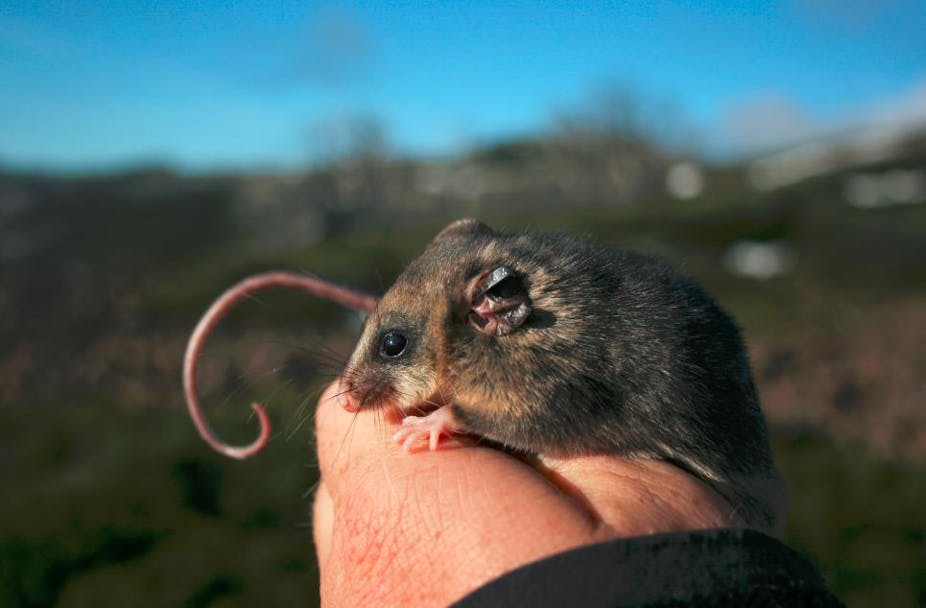Nearly half of 200 Australian species are threatened by climate change, according to our research published today in PLOS ONE.
Climate change is one of the major contributors to global biodiversity loss, and plant and animal species can be affected by climate change in different ways. Some may be directly affected by sea level rise or snow melt, whereas some may lose a pollinator or prey species that they rely on.
Species that cannot move to more suitable habitats, or who have no suitable habitat left, risk becoming extinct. Understanding how each of our species is affected by climate change means we can help them survive it.
A recent global study showed that between 11-15% of amphibian species are threatened by climate change (depending on how much the world warms), yet we rarely know how to help these species because we don’t know why individual species are vulnerable.
We set out to document how many of Australia’s threatened species are likely to be impacted by climate change, and which aspects of their biology was leading to the vulnerability. We chose a balanced selection of species, including mammals, amphibians, reptiles, birds and plants for our analysis, and assess them using a method developed by NatureServe.
Which species?
Over 45% of all the threatened species we assessed were moderately to highly vulnerable, including a wide range of birds, mammals, amphibians, reptiles and plants.
The species most vulnerable to climate change was the Mountain Pygmy Possum, threatened by increased snow melt, and further habitat loss through development of ski resorts.
Overall, and perhaps not surprisingly, amphibians are most highly vulnerable to climate change. They have small and fragmented distributions, and rely heavily on particular moisture regimes and aquatic habitats.
Plants were the next most vulnerable group, because they often have low dispersal ability (they cannot move freely like animals) and rely on specific soil types. Birds, who are very good dispersers, were the least vulnerable group.

Where should we focus our efforts?
The three most pervasive factors for all the assessed threatened species were low genetic variation, dependence on particular patterns of disturbance (often fire, required for reproduction or to maintain suitable habitats), and reliance on particular patterns of rainfall or habitats.
Crucially, the reasons why threatened species are vulnerable to climate change varied markedly across Australia. Along the south-east coastline, the major driving factors were reliance on particular patterns of disturbance and low genetic variation, while in contrast one of key factors driving vulnerability of the species residing in the upper Northern Territory was reliance on particular moisture regimes and habitats.
Each of these regions will require a set of on-ground actions targeted specifically to address the factors causing climate change vulnerability of the species living there.

What can we do?
Once the drivers of climate change vulnerability are understood for different species, groups of species and regions, we can start to take action. Actions that are targeted to help species adapt to the changing climate and give them the best chance of surviving into the future.
But how do we go about it? As an example, we can increase moisture in an environment to help amphibians by installing microhabitat refuges (such as fallen logs and cover boards), or directly manipulating the moisture levels at breeding sites by installing irrigation sprayers.
We can target actions to specific sites. The south-east coastline for example could be benefited by having dedicated areas that are specially managed to maintain appropriate patterns of fire.
Other actions may be broader and target a larger number of species, such as habitat restoration, or corridors to counter increasing fragmentation. We need to identify and protect critical refuges for as many species as possible. Whatever the case, helping our species adapt to climate change is going to require novel and unique management strategies.
Now that we know which of our threatened species are being impacted by climate change and why, we can begin to design on-ground management strategies to start combating the impending changes.
In conjunction with increasing on-ground actions, we must keep in mind that the cost and difficulty of more intensive management to save threatened species underlines the importance of bringing about rapid and deep cuts to the greenhouse gas emissions that are creating this crisis.
This article was co-authored by Martin Taylor, Conservation Science Manager at WWF-Australia.

